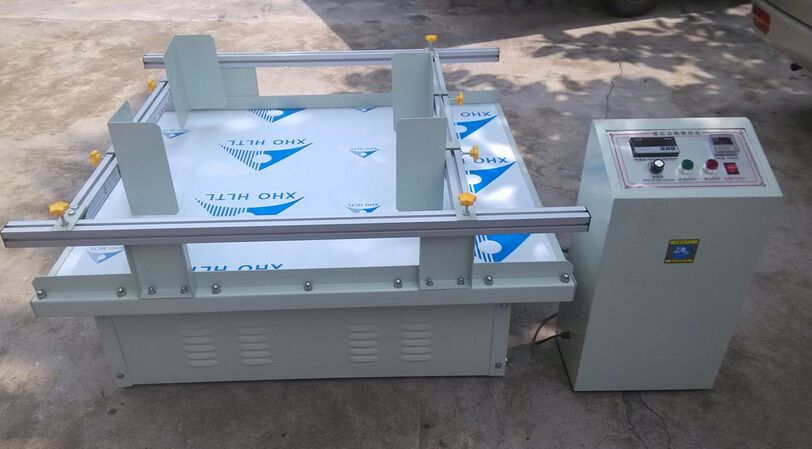ISO 13355-14 Long-Term Transport Vibration Test
The ISO 13355 series of standards is designed to provide guidelines for the performance and acceptance criteria of packaging systems under various transport conditions. The ISO 13355-14 standard specifically addresses long-term transport vibration testing, which aims to evaluate how packaging withstands prolonged exposure to environmental stresses like vibrations during transportation.
This type of testing is crucial in ensuring that products remain unharmed throughout their journey from manufacturer to consumer. It helps identify potential weaknesses in the design and material selection of the packaging, thereby enhancing product protection and customer satisfaction.
The test simulates real-world conditions by subjecting packages to controlled vibrations over a specified duration. The standard outlines specific frequency ranges, amplitude levels, and time intervals that are representative of common transport scenarios such as road, rail, sea, or air travel.
Understanding the requirements of this testing involves knowledge about the types of materials used in packaging, their physical properties, and the expected environmental conditions during transportation. This information is vital for ensuring accurate preparation and execution of tests according to industry best practices.
The ISO 13355-14 standard specifies detailed procedures for conducting long-term transport vibration tests using various test methods including shaker tables or random vibration machines capable of generating the required frequency bands and amplitudes. These devices must maintain precise control over parameters like acceleration peaks, duration, and phase shift to replicate realistic shipping environments accurately.
Preparation steps include selecting appropriate specimens representative of actual products being shipped along with suitable protective packaging materials. Proper labeling ensures traceability throughout the testing process so that results can be correlated back to specific product types or batches if necessary during review later on.
Post-test analysis focuses primarily on evaluating any damage incurred by both contents and containers subjected to these simulated conditions. Observations include visual inspections, weight checks, internal component integrity assessments, and functional performance tests depending upon the nature of goods involved. Any deviations from initial states could indicate issues related either directly to packaging design itself or indirect factors stemming from improper handling practices during shipment.
It's important to note that compliance with this standard does not guarantee perfect protection against all possible impacts encountered during logistics operations but rather provides an objective measure of how well the product can withstand typical transportation challenges. By adhering strictly to specified conditions outlined within ISO 13355-14, organizations demonstrate their commitment towards maintaining high standards in quality assurance and reliability.
- Ensures durability and integrity during extended periods of transportation
- Provides insights into potential design flaws or material weaknesses early on
- Facilitates continuous improvement through iterative testing cycles
- Promotes trust between suppliers, distributors, and end customers
Applied Standards
The ISO 13355-14 standard is part of a broader suite aimed at providing comprehensive guidance on packaging design for various modes of transport. It builds upon previous editions and updates to reflect current industry practices and technological advancements.
In addition to ISO 13355-14, other relevant standards include:
- ISO 12428: Environmental Conditions for the Determination of Packaging Performance
- ASTM D7960: Test Method for Determining Vibration Resistance of Packaged Products by Means of Accelerometer Measurements During Transport Simulation Testing
- EN 355-1: Transportation Packaging - Part 1: General Requirements
These standards work together to create a harmonized framework that supports consistent and reliable packaging performance across different sectors. Compliance with these international norms ensures uniformity in testing protocols and reporting formats, facilitating seamless communication among stakeholders involved in product distribution chains.
Scope and Methodology
The ISO 13355-14 standard covers the evaluation of packaging systems subjected to long-term transport vibration conditions. This involves subjecting specimens representing actual products or prototypes under specified environmental stress factors over extended durations.
The scope includes:
- Identifying appropriate specimen sizes and configurations
- Selecting suitable protective packaging materials based on expected usage scenarios
- Determining frequency ranges, amplitude levels, and duration of simulated transport conditions
- Evaluating performance indicators such as weight loss, deformation, or functional failures after testing
To conduct this test effectively, laboratories equipped with advanced vibration isolation systems are essential. These setups allow precise control over environmental parameters ensuring accurate representation of real-world transport conditions.
Quality and Reliability Assurance
Ensuring the quality and reliability of packaging through long-term transport vibration testing is critical for maintaining customer satisfaction and operational efficiency. Here are some key measures:
- Precision calibration of all measurement instruments before each test run to minimize errors
- Detailed documentation of test procedures, parameters, and results for future reference
- Regular maintenance schedules for equipment to prevent malfunctions during critical phases
- Involvement of experienced personnel trained in both theory and practice aspects of packaging design and testing





